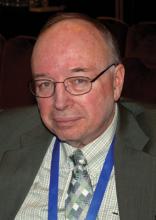LONDON – Sexually transmitted diseases in children and adolescents should be considered a problem of the brain rather than of the genitals, according to a leading pediatrician.
Although largely preventable through the routine use of condoms and through curbing the number of sexual partners, around 15 million new sexually transmitted disease (STD) cases occur in the United States each year. Most of these cases occur in teenagers and young adults.
[Almost All Depressed Adolescents Recover, but Nearly Half Have Recurrence]
"To be a teenager means that you get involved in risk-taking behavior," Dr. Donald E. Greydanus, professor of pediatrics and human development at Michigan State University in Kalamazoo, said at the Excellence in Paediatrics annual meeting.
Dr. Greydanus noted that teenagers are more likely than adults to be risk takers, seek out novelty situations, experience emotional intensity and lability, and succumb to peer-group influences, all as a result of underlying neurobiologic mechanisms (Encephale. 2009;35[suppl. 6]:S182–9).
"Think of [STDs] not as a genital problem but as a brain disease," Dr. Greydanus said, who explained that adolescence is a time when the brain is still developing. While risky sexual behavior is perhaps par for the course, all health care professionals need to get involved and help adolescents understand the risks that they are taking with their health.
"It’s amazing how young these kids start being sexually active," Dr. Greydanus observed in an interview, noting that children as young as 6 years old may reach puberty and begin to engage in sexual intercourse. "All of us, no matter what field we are in, need to recognize that the majority of teenagers that we see will be sexually active, or soon will be, after we have seen them."
[FDA and CDC to Consider Gardasil for Anal Cancer Prevention]
Adolescents should be screened for STDs at every appropriate opportunity, he advised, and treated accordingly if an STD is diagnosed. Data show that if one STD is present, then there is a good chance there may be another (Sex. Trans. Dis. 1999;26:26-32). Asking two simple questions – "Are you sexually active?" and "Are you using a condom?" – could help health care professionals have a huge impact on the number of STDs occurring in adolescents, suggested Dr. Greydanus, who also serves as director of the pediatrics program at the university.
The World Health Organization guidelines on the management of STIs provide a good model for the early diagnosis and treatment of STDs without the need to wait for laboratory results. Dr. Greydanus advised that all clinicians, regardless of their specialty, try to address any likely STDs rather than simply refer, as adolescents might not attend a follow-up appointment or visit a sexual health clinic.
He urged: "Whether you are a cardiologist, a neurologist, a generalist – it doesn’t matter. We are all in this fight together, and because we are not doing a good job globally, [sexually transmitted] diseases are increasing, not decreasing."
In several European countries, pediatrics is split between primary and secondary care, said Dr. Russell Viner of the Institute for Child Health, University College London. Although primary care pediatricians might be more attuned to the problem of STDs in their young patients, those working in secondary care might not be so aware or willing to investigate.
"Certainly in Britain, I think there is a real reluctance to think about STIs and a general lack of knowledge as it’s not seen as a pediatrician’s business," Dr. Viner said. Yet with up to 50% of 15-year-olds and 15% of under 13-year-olds being sexually active, there is clearly a need for more screening and treatment by both primary and secondary care pediatricians.
Adolescents represent a unique group within pediatric care, Dr. Viner said, with distinct physiologic and neurologic development in comparison to infants, children, and adults. "The good modern pediatrician must be an expert on adolescent physiology and psychology," he said.
Dr. Greydanus and Dr. Viner reported that they had no relevant financial disclosures.

